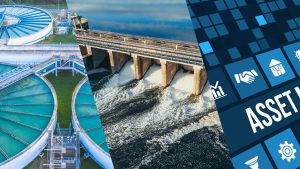Carbon emissions is a result of the imbalance between the earth’s original strata has been disrupted by the rise in atmospheric carbon dioxide concentration, leading to ecological and environmental repercussions including temperature zone shifts, terrestrial ecosystem evolution, and ocean acidification. The social and ecological determinants of health, such as clean air, safe drinking water, enough food, and adequate shelter, are impacted by these ecological and environmental changes. Global threats like rising carbon emissions that results to drastic climatic changes must be addressed as soon as possible. In this regard, reducing carbon emissions at the source and increasing carbon absorption are two strategies that can be used to effectively manage climate change. Digital tools can also be employed to forecast and reduce the effects of certain climate disasters as the destruction caused by storms, wildfires, and droughts increases due to climate change. This article will discuss 04 different technologies that can competently reduce carbon footprint.
GIS- Pinpoint Hazardous Gas Sources
Geographic information system (GIS) software can analyse, measure, and report greenhouse gas emissions and land-use change. GIS will be used to comply with the reporting requirements of the Kyoto Protocol to reduce greenhouse gases that contribute to Earth’s climate changes. There are many ways in which GIS tools can help reduce carbon emissions. Here are a few ways in which they can do so:
Calculating Carbon Sequestrations
During the photosynthetic and respiration processes that occur naturally in forests, carbon dioxide is broken down and stored or sequestered. This procedure is a natural way to combat rising carbon dioxide levels that contribute to climate change. By utilising verified and vetted land-use data, ArcGIS offers scientific approaches for calculating carbon sequestration. The information about land use changes from year to year is then displayed. Furthermore, calculating carbon sequestration in the farming sector provides an interpretation of carbon production and greatly aids farmers in improving their farming strategies to lower carbon emissions.
Geospatial Measurement
When statistical data and geographical data are combined, the potency of the data is increased, leading to a far deeper comprehension of social, economic, and environmental concerns than when the statistical or geospatial data are seen separately. A growing amount of geodata is available because of geospatial information technology. This kind of data can be used to analyse variables that determine how natural resources are used and contribute to climate change, as well as to make wise decisions for sustainable development. To create a comprehensive multi-thematic perspective of the interrelationships in the nexus economy-environment-territory, economic and environmental data are combined with geospatial information.
Reducing Traffic Emissions
There are numerous methods to use ArcGIS to lessen traffic emissions. GIS is contributing to cleaner air through intelligent routing, reduced congestion, encouraging people to walk or cycle, and assisting in the formulation of government transportation policy. GIS has been utilised for a very long time and still is now to increase the effectiveness of many different kinds of vehicle trips. Better logistics and routing decisions can be made by evaluating vast volumes of data from many sources, which will help cut down on fuel expenditures, overall trip time, and pollution.
Artificial Intelligence - Automate EPA Compliance and More
Artificial intelligence (AI) will help with management in the areas of transportation, energy, water, and agriculture. AI can enhance crop production monitoring and environmental condition monitoring in agriculture. Deep learning, predictive abilities, and intelligent grid systems are further ways that AI can control the supply and demand of renewable energy. Here are a few ways in which AI can reduce carbon emissions looked into in detail:
Enhancing Transportation Efficiency
Artificial intelligence technologies are already widely utilised in the transportation industry, where they can, for instance, be used to plan and schedule the infrastructure for transportation. AI can help improve how people, products, or vehicles move across a transportation network. Cities may better manage their traffic, reducing emissions, by utilising AI to optimise transit and predict traffic conditions. AI is already being used by contemporary cities to improve public transit, giving commuters advanced notice of the arrival of their next train or bus. They are already utilising AI to improve their transportation infrastructure, for instance by using it to improve how quickly electric vehicles can be charged on a road network. As a result, charging stations can be made more efficient by keeping an eye on energy consumption. This benefit to the environment helps to explain why AI is being widely used to manage environmental issues and combat global climate change.
Predictive AI
Based on the most recent carbon footprint data, predictive AI can predict future carbon emissions. Furthermore, by enhancing our capacity to predict catastrophic weather occurrences and offering decision-support tools to aid in more effective responses, AI can also help us adapt to the effects of climate change. Governments, tech companies, and investors are becoming more interested in artificial intelligence (AI)-based learning systems, which employ algorithms to find patterns in data sets and then make predictions, suggestions, or decisions in physical or virtual environments about how environmental patterns are changing. Data and AI-driven software can play a crucial role in balancing operations in real-time, and increasing energy yield across power networks and smart appliances.
Maximise Electrical Grid Efficiency
AI applications could maximise the deployment of renewable energy sources by supplying solar and wind energy into the electrical grid as needed, increasing power storage, and designing more energy-efficient structures. Decentralised energy sources can transfer any extra electricity they generate to the grid with the use of AI software, and utilities can route that electricity where it is required. Similar to energy storage, which can keep extra energy when demand is low in homes, offices, cars, and other structures, AI can use that energy when generation is insufficient or impossible. Owing to AI, electricity production and transmission dependencies on a single utility are waning, necessitating a change in the utilities’ business strategies. Soon, they won’t be the only energy source; instead, they’ll be required to keep the grid balanced by transferring electrons from various sources and storage systems to efficiently supply energy where it’s needed second by second.
AI can help to mitigate climate change in a variety of ways, through improving energy efficiency or lowering emissions from industries, agriculture, and transportation. AI tools and data optimisation techniques can increase productivity in production, transportation, etc., hence reducing carbon emissions and lowering costs. This is done by offering thorough insight into every area of carbon emission.
Digital Twin- Interactive and Scalable Virtual Models for Greener Strategies
Digital twins are assisting in monitoring, finding ways to increase productivity, avoid downtime, and even planning for the future. Digital twins can assist with industry 4.0 decisions such as whether to reuse, refurbish, recycle, or scrap plastic products as well as where to get them from. With the use of digital twins, it is also possible to choose the best materials for manufacturing tasks that aim to save energy or are simply more effective at storing renewable energy. It has been shown that digital twins can assist businesses in repurposing and elevating their sense of sustainability. In the end, sustainable development is essential for businesses to prosper while reducing their environmental impact.
Net Zero Emmission Programs
Use digital twins to virtually look beyond the current industrial model of extracting, creating, consuming, and discarding. To implement a “circular economy” system that considers nearly zero production of waste and pollution, maintains goods and materials longer in the recycling loop, and aids in the regeneration of natural systems, businesses and even entire cities have possibilities. By 2030, worldwide carbon dioxide emissions might be reduced by 20% owing to the use of digital twins. As a result of using or reusing lighter, more durable materials, businesses can change how goods and services are produced and provided, which results in energy savings. With the aid of a computerised reproduction of the environment, infrastructure, or area, digital twins can combine all the data from a physical environment and replicate it digitally. With the support of this potent technology, the industry may find solutions for creating surroundings that are safer, more sustainable, and more intelligent.
Fight Against Climate Changes
Immersive technology is crucial in the fight against climate change since, according to a recent study, digital twin technology may reduce carbon emissions by 50–100% within buildings while also lowering operating costs by 35–40% and increasing productivity and efficiency by 20%. Setting meaningful objectives and monitoring progress is impossible without a method for precisely measuring and reporting on current carbon emissions. Businesses may precisely comprehend and measure their baseline using a digital twin and the newest scanning and “sniffing” technology. An accurate baseline provides accurate data that may be used to document the effects of contaminants and other environmental factors so that sustainable targets and reports can be made. Digital twins can project a realistic image of the past and present status of an area after an appropriate baseline is created and routinely evaluated. Additionally, this data can be used to anticipate or predict situations involving resources, habitats, and even entire cities.
IIoT - Hyperconnectivity Between Green Initiators with Common Goals
Carbon footprint reduction can be significantly impacted by industrial IoT. It accomplishes this by using fewer natural resources, such as water, power, fossil fuels, and raw materials. Additionally, the technology can help reduce production waste and is crucial to the burgeoning circular economy’s ability to trace material flow. Here are a few ways in which IIoT aids the reduction of carbon emissions looked into detail:
Precision Farming
Precision farming is used in farming to reduce the amount of water, fertiliser, and pesticides utilised. The technology keeps an eye on moisture, temperature, and soil minerals. As a result, yields are improved and increased, and the usage of resources and land is reduced. The management of farm resources can be enhanced by combining algorithms, or “grow recipes,” with IoT sensors in the soil and surrounding environment. Additionally, industrial IoT may be able to lessen the damaging effects of greenhouse emissions created by animals. Through the careful observation of the health of livestock, such as the diet and body temperature of animals, methane emissions from ruminants may be controlled, which contributes to a decrease in greenhouse gas emissions.
Smart Energy Monitoring
IoT environmental monitoring sensors can automatically detect room occupancy and adjust lighting, cooling, and heating systems to save energy. These devices can make adjustments based on occupancy data, schedules set by an operator, or environmental conditions. Additionally, submetering in buildings enables firms to track consumption expenditures by location and pinpoint problem areas. Organisations can manage operational data in real-time, measure consumption, and estimate demand using wireless connectivity and sensors to be proactive about sustainability.
Air Pollution Monitoring
Through employee commutes, operational activities, and business travels, many sectors contribute to air pollution. As a result, creating a sustainable business is everyone’s responsibility. To identify and manage pollution concerns, IoT-based environmental monitoring devices can help tackle these problems by giving real-time data on air quality. IoT sensors, for instance, have lately been utilised by scientists to find methane leaks in several energy infrastructures, including remote locations. Businesses can use these technologies to monitor emissions across the entire facility and implement preventive or mitigating actions to lessen their environmental impact.
Optimising Farming Efficiency
It is simpler to monitor and access humidity, temperature, and weather across linked devices with an IoT-based cloud-based temperature monitoring system. With the help of this information, farmers can modify the environment in enclosed areas to assure year-round crop production and higher yields. Additionally, to ensure the effective use of resources, smart sensors provide real-time monitoring of irrigation systems, soil quality, livestock health, and crop conditions. Farmers may, for instance, identify insect infestations and decide where and how to apply pesticides by placing smart traps, which minimise the use of chemicals and lowers emissions.
Do Your Bit to Contribute Towards a Sustainable Future
It is no easy feat to achieve net zero operations, but that does not make it impossible. If you employ the aforementioned technologies in your operations, it comes without a doubt that having a near-zero carbon footprint is achievable. If businesses and governments do not start using digital tools to reduce carbon emissions, it could be too late to prevent the worst impacts of climate change. However, as it stands, it is not too late to join the movement of bringing about a more sustainable future. Contribute your share towards a greener planet today.







